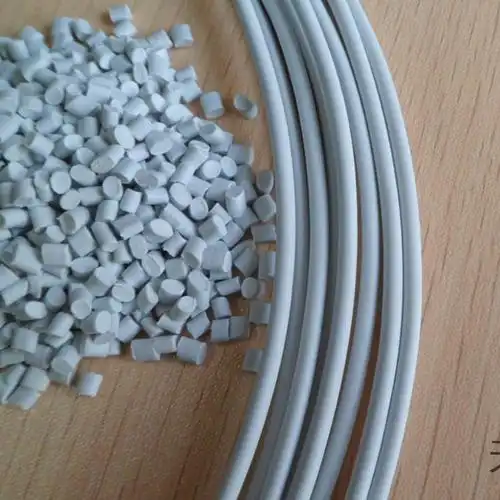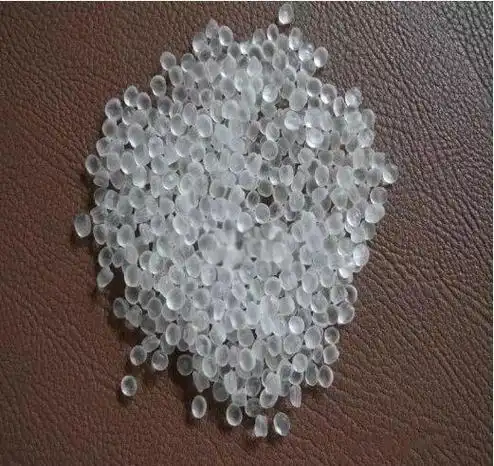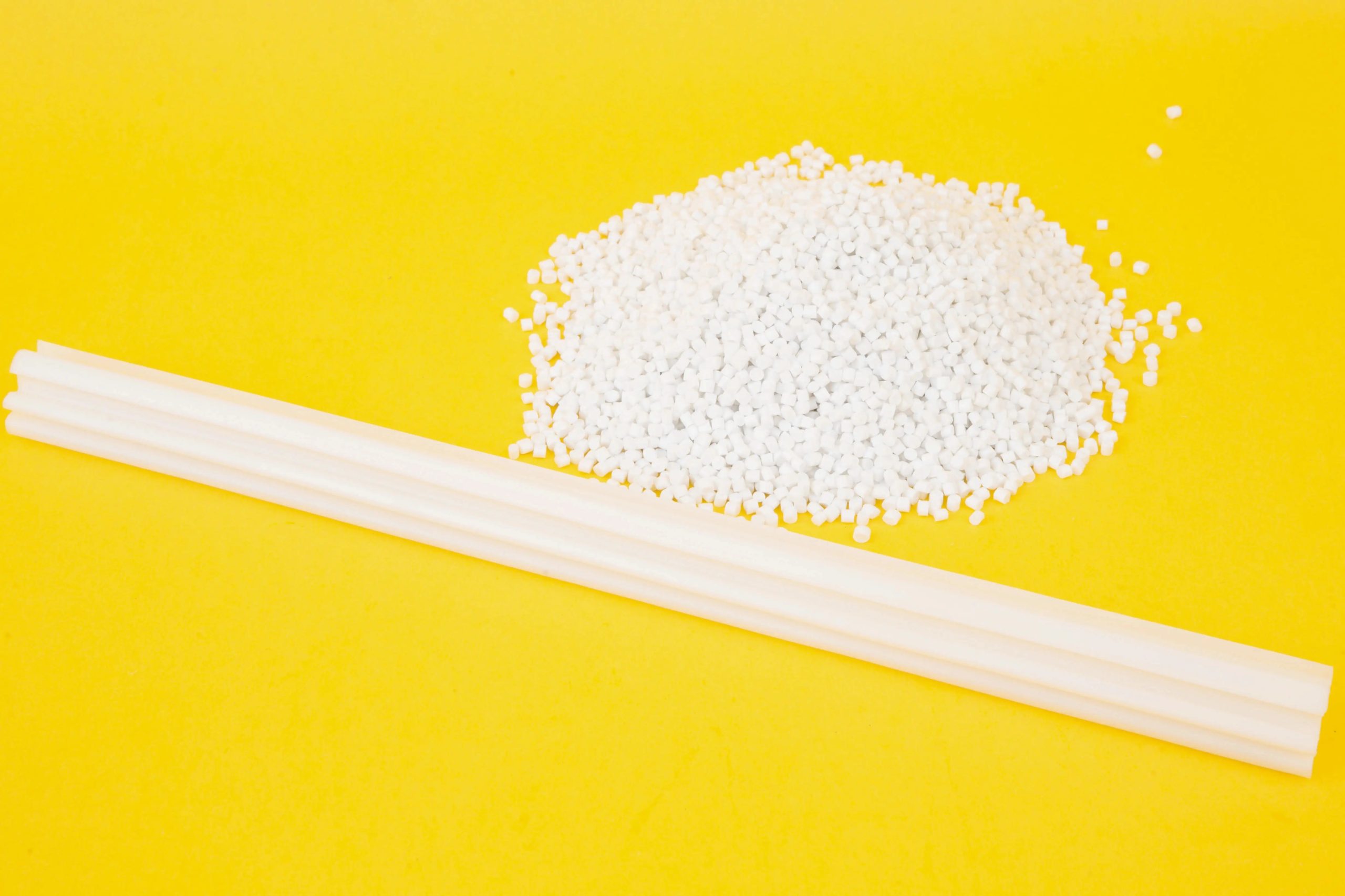Having spent over a decade in the plastics manufacturing world, I’ve seen my fair share of quirks and challenges with thermoplastic elastomers (TPEs). These soft, rubber-like materials are a go-to for everything from phone cases to medical grips, thanks to their flexibility and pleasant feel. But one issue that’s tripped up many a production line—and sparked plenty of late-night troubleshooting sessions—is glossy marks on molded TPE parts. Those shiny, uneven patches can make a perfectly good product look flawed, and they’re a headache for anyone aiming for a consistent matte finish. Drawing from years of hands-on problem-solving, I’ll walk you through why these glossy marks happen and share practical, battle-tested methods to fix them, so you can get your TPE parts looking flawless.

What Are Glossy Marks on TPE?
Glossy marks, sometimes called shiny spots or gloss streaks, are areas on a molded TPE part where the surface appears shinier than intended, disrupting an otherwise uniform matte or semi-matte finish. They can show up as streaks, patches, or irregular shiny areas, often making the part look inconsistent or low-quality. In my experience, these marks are especially frustrating in applications where aesthetics matter, like consumer electronics or automotive interiors.
I remember a project where we were molding TPE grips for a fitness tracker. The client wanted a silky, matte texture, but every other part came out with glossy streaks near the gate. It was a classic case of trial and error, but we eventually cracked the code. Let’s dive into the causes of these marks and how to eliminate them, so you don’t have to go through the same grind.
Why Do Glossy Marks Appear on TPE?
Glossy marks on TPE parts usually stem from issues in the material, molding process, or mold itself. Based on my years of diagnosing these problems, here are the main culprits:
Uneven Cooling: If the TPE cools unevenly in the mold, some areas solidify faster, creating shinier surfaces where the material sets too quickly.
Mold Surface Issues: A mold that’s too polished or contaminated with release agents can impart unwanted gloss to the TPE.
Material Flow Problems: High injection speeds or improper gate placement can cause turbulent flow, leading to glossy streaks near the gate or weld lines.
TPE Formulation: Some TPE grades, especially those with high plasticizer content, naturally tend toward glossiness unless modified with matting agents.
Mold Release Agents: Overuse or improper application of release agents can leave residues that create shiny spots.
One time, while working on TPE seals for a car dashboard, we noticed glossy marks near the edges. After some digging, we found that the mold’s cooling channels were unevenly distributed, causing inconsistent cooling. Pinpointing the root cause is half the battle, so let’s explore how to tackle these issues.

Strategies to Eliminate Glossy Marks on TPE
Fixing glossy marks requires a combination of material tweaks, process optimization, and mold adjustments. Below, I’ve outlined the most effective methods I’ve used, complete with insights from real projects.
1. Optimize the Molding Process
The injection molding process is often the source of glossy marks, and fine-tuning parameters can make a huge difference. Here’s what to focus on:
Lower Melt Temperature: High melt temperatures increase the TPE’s flowability, which can lead to a glossier surface. Reducing the temperature within the manufacturer’s recommended range (e.g., 170–200°C for SEBS-based TPEs) promotes a matte finish. In a project for TPE phone cases, dropping the melt temperature by 10°C reduced glossy streaks significantly.
Adjust Injection Speed: High injection speeds can cause turbulent flow, creating shiny areas near the gate. Slowing the injection speed allows the TPE to fill the mold more evenly. I once cut the injection speed by 15% on a TPE grip project, and the glossy marks near the gate vanished.
Improve Cooling Uniformity: Uneven cooling is a common culprit. Ensure cooling channels are evenly distributed and maintain a consistent mold temperature (e.g., 20–40°C for TPEs). For a medical TPE component, we redesigned the cooling system to balance heat dissipation, eliminating shiny patches.
Extend Cooling Time: Allowing the TPE to cool slightly longer in the mold can reduce gloss by giving the surface time to set uniformly. This worked wonders for a batch of TPE gaskets where rushed cooling caused shine.
2. Enhance Mold Design and Maintenance
The mold itself plays a massive role in TPE surface finish. A poorly designed or maintained mold can introduce glossy marks, but a few tweaks can fix it.
Use Proper Mold Texturing: For a matte finish, the mold surface should be textured with a sandblasted or chemically etched finish (e.g., VDI 30–36). A polished mold (e.g., SPI A-1) will produce glossy TPE surfaces. In a project for TPE shoe soles, switching to a VDI 33 texture eliminated shiny spots entirely.
Clean the Mold Regularly: Residues from mold release agents or TPE degradation can create glossy patches. Clean the mold with a solvent like isopropyl alcohol between runs. I’ve seen molds neglected for just a few cycles cause shiny streaks that a quick cleaning resolved.
Minimize Release Agents: Overusing mold release agents can leave residues that increase gloss. Use minimal amounts or switch to silicone-free agents compatible with TPE. In one case, cutting release agent use by half fixed glossy marks on TPE handles.

3. Adjust TPE Formulation
The TPE’s composition can naturally lean toward glossiness, but tweaking the formulation can help achieve a consistent matte finish.
Add Matting Agents: Fillers like silica or calcium carbonate can reduce gloss. Work with your TPE supplier to incorporate matting agents without compromising flexibility. For a TPE yoga mat project, we added 5% silica filler, which gave a uniform matte texture.
Reduce Plasticizers: High plasticizer content can increase gloss. If possible, use a TPE grade with lower plasticizer levels or one designed for matte finishes. I once collaborated with a supplier to reformulate a TPE for a soft-touch grip, reducing plasticizers by 2% to eliminate shine.
Test Different Grades: Not all TPEs behave the same. SEBS-based TPEs are often glossier than TPUs, but some grades are formulated for matte surfaces. Test multiple grades to find the best fit.
4. Post-Processing Solutions
If glossy marks persist after molding, post-processing can help achieve a uniform matte finish. These methods require care to avoid damaging the TPE.
Media Blasting: Light blasting with media like glass beads or walnut shells can create a matte texture. I used this on TPE earbud tips, where a quick blast removed glossy streaks without affecting softness.
Chemical Matting: Certain chemical treatments can reduce gloss, but they must be TPE-compatible to avoid degradation. Always test on samples, as I learned when a chemical treatment made a TPE part brittle in an early project.
Matte Coatings: Applying a UV-curable matte coating can standardize the finish. For a TPE smartwatch strap, we used a matte coating to mask minor glossy marks, achieving a premium look.
5. Control Environmental Factors
Post-molding conditions can also cause glossy marks. Exposure to oils, UV light, or heat can alter the TPE surface, creating shiny patches.
Proper Storage: Store TPE parts in a cool, dry environment away from UV exposure. In a project for outdoor TPE mats, we added UV stabilizers to the formulation to prevent glossing after sun exposure.
Clean Handling: Oils from hands or machinery can create shiny spots. Use gloves and clean equipment during handling. This simple step fixed glossy marks on TPE medical grips in one case.

Comparing Solutions for Glossy Marks
To make this actionable, here’s a table summarizing the key methods for eliminating glossy marks on TPE, based on my experience across various projects.
|
Method |
Effectiveness |
Best For |
Key Considerations |
|---|---|---|---|
|
Molding Optimization |
High |
All molded TPE parts |
Adjust temperature, speed, cooling |
|
Mold Texturing |
High |
Parts needing matte finish |
Use VDI 30–36; maintain mold |
|
TPE Formulation |
Moderate to High |
Long-term consistency |
Add matting agents; test grades |
|
Post-Processing |
Moderate |
Fixing minor defects |
Test compatibility; avoid overuse |
Note: Effectiveness varies by TPE grade and application. Prototype thoroughly before scaling up.
This table reflects real-world trade-offs. Molding optimization is the most reliable for consistent results, while post-processing is a quick fix for small batches. TPE formulation changes are ideal for long-term production but require supplier collaboration.
Real-World Examples
Let me share two projects where we successfully tackled glossy marks on TPE parts.
Case 1: TPE Phone Case Grips
A client producing TPE phone case grips wanted a uniform matte finish, but glossy streaks appeared near the gate. We traced the issue to high injection speed and a polished mold surface. Slowing the injection speed by 20% and re-texturing the mold to VDI 34 eliminated the marks. A small amount of silica filler was added to the TPE for extra matte consistency. The result? A sleek, non-shiny grip that boosted the product’s premium feel.

Case 2: TPE Medical Tubing
For a medical device with TPE tubing, glossy patches showed up after molding due to uneven cooling and excessive mold release agent. We optimized the cooling channels for uniform heat dissipation and switched to a silicone-free release agent. A light media blasting post-process ensured a consistent matte finish. The tubing passed strict quality checks and looked flawless.
Challenges and Practical Tips
Glossy marks can be stubborn, and fixing them isn’t always straightforward. Here are some challenges I’ve faced and tips to navigate them.
Challenges
Cost of Changes: Reformulating TPE or re-texturing molds can be pricey, especially for small runs.
Process Sensitivity: TPEs are finicky, and small changes in molding parameters can affect other properties like flexibility or strength.
Time-Consuming Testing: Finding the right combination of parameters often requires multiple trials, which can delay production.
Environmental Impact: Post-processing methods like chemical treatments may generate waste, which can conflict with sustainability goals.
Tips
Prototype Early: Test molding parameters and TPE formulations on small batches to avoid costly rework.
Document Successes: Keep detailed records of effective settings (e.g., injection speed, mold texture) to replicate results.
Work with Suppliers: Collaborate with TPE suppliers to select matte-friendly grades or additives. They often provide free samples for testing.
Maintain Molds: Regular cleaning and texturing checks prevent glossy marks from mold-related issues.
Balance Post-Processing: Use minimal post-processing to avoid altering TPE properties. Test on samples first.

The Future of TPE Surface Finishing
The industry is making strides in tackling glossy marks. Advanced TPE formulations with built-in matting agents are reducing the need for post-processing. I recently saw a TPE grade at a trade show that achieves a consistent matte finish without additives, thanks to novel polymer blends. Smart molding machines with real-time surface monitoring are also emerging, alerting operators to potential glossy marks during production.
Another exciting development is laser text论证: Lasers can create precise micro-textures on molds, ensuring a matte finish without traditional sandblasting. These innovations are still evolving, but they’re set to make glossy marks less of a headache in the future.
Wrapping Up
Dealing with glossy marks on molded TPE can feel like chasing a moving target, but with the right approach, you can achieve a smooth, consistent matte finish. By optimizing your molding process, maintaining molds, tweaking TPE formulations, and applying targeted post-processing, you’ll turn those shiny patches into a thing of the past. My years of troubleshooting have taught me that patience, testing, and collaboration with suppliers are key to getting it right.
Whether you’re molding TPE for consumer goods, medical devices, or automotive parts, these strategies will help you deliver a high-quality, uniform finish. Roll up your sleeves, experiment with these methods, and you’ll have TPE parts that look as good as they perform.

Related Questions and Answers
Q: Can I eliminate glossy marks without changing the TPE formulation?
A: Yes, by optimizing molding parameters (e.g., lower melt temperature, slower injection speed) and using a properly textured mold (VDI 30–36). These often solve the issue without reformulation.
Q: How do I know if my mold is causing glossy marks?
A: Check for polished or worn mold surfaces, residue buildup, or uneven texturing. Retexturing to a matte finish (e.g., VDI 33) or cleaning the mold can confirm if it’s the culprit.
Q: Are some TPE grades less prone to glossy marks?
A: Yes, TPEs with higher filler content or matting agents (e.g., silica-filled SEBS) naturally produce matte finishes. Consult your supplier for matte-specific grades.
Q: Does post-processing affect TPE performance?
A: It can if not done carefully. For example, aggressive chemical treatments may weaken the material. Test post-processing methods on samples to ensure no impact on flexibility or strength.
Q: How can I prevent glossy marks in future production runs?
A: Use consistent molding parameters, maintain mold texture, and store parts in a controlled environment to avoid post-molding gloss changes from UV or oil exposure.





